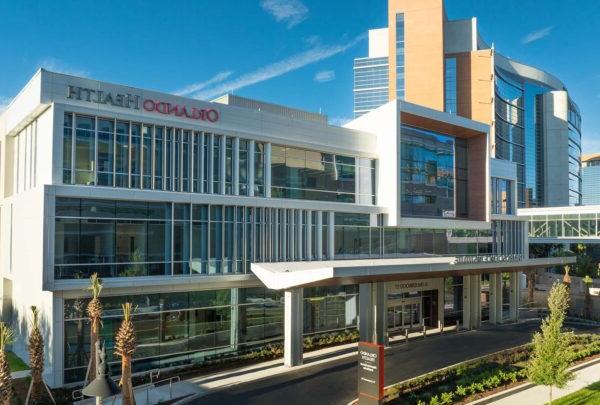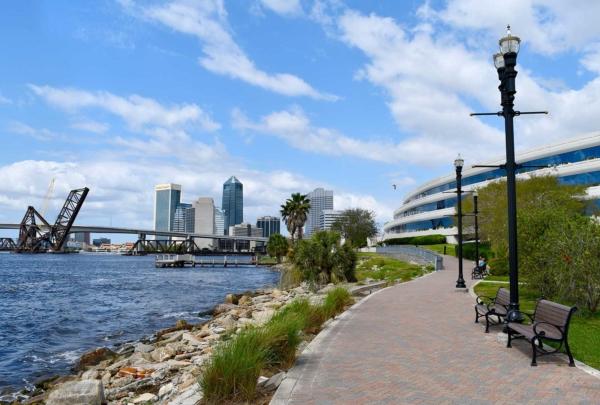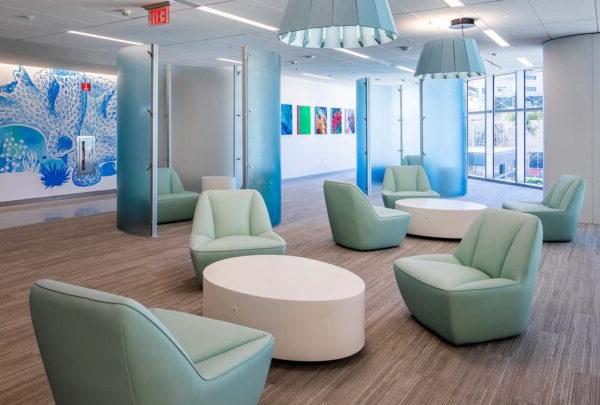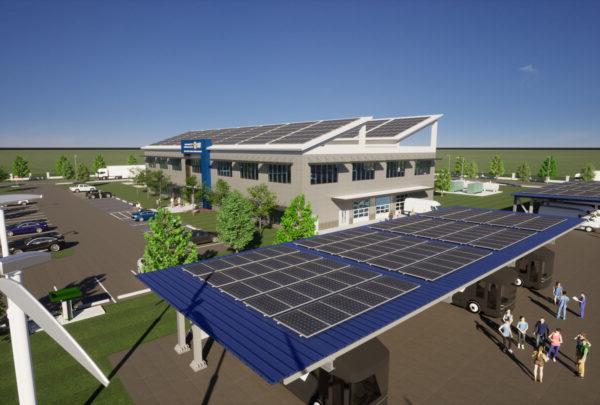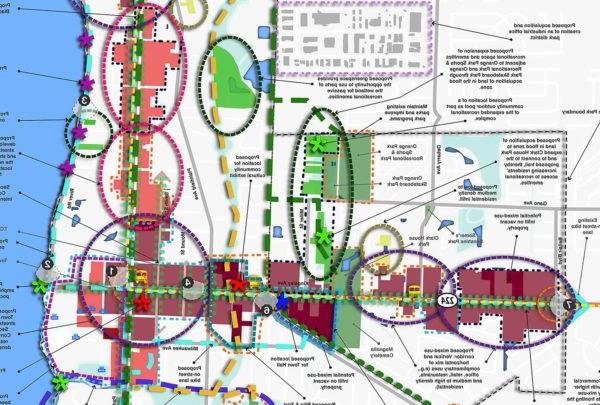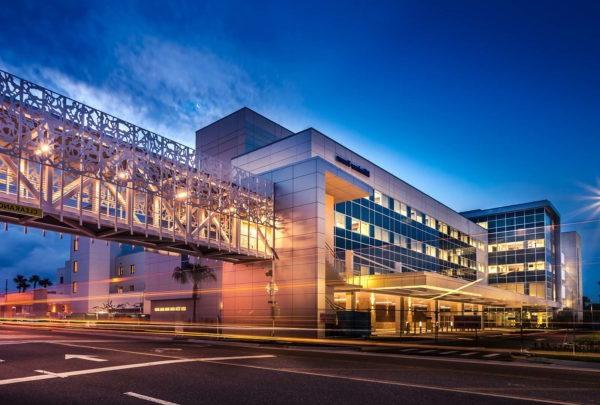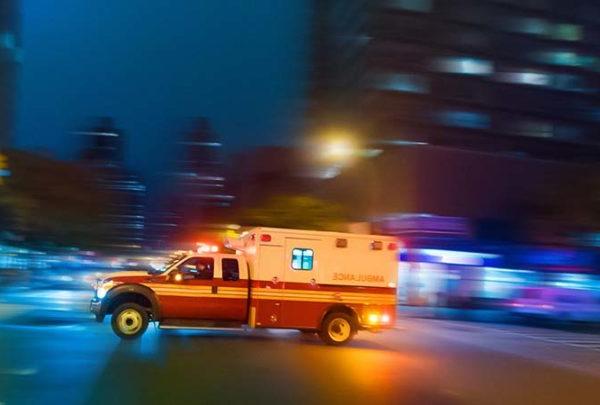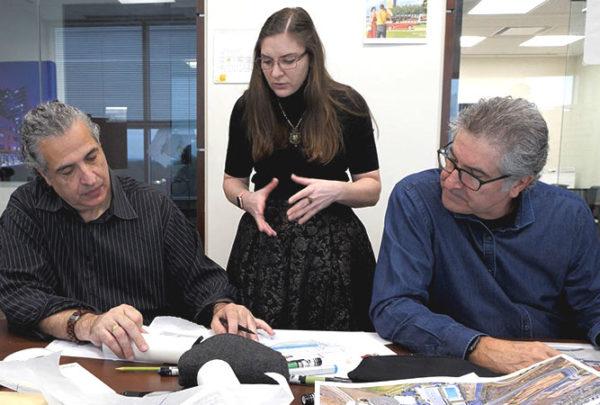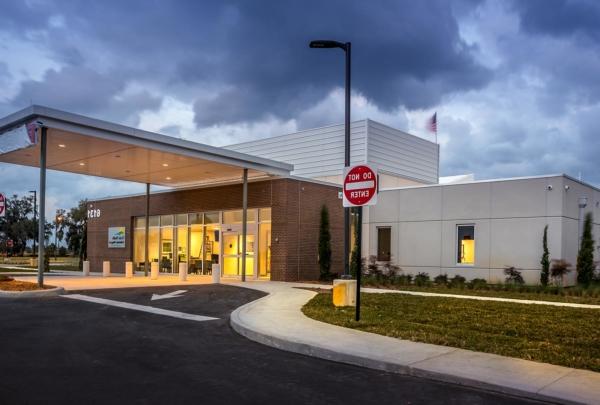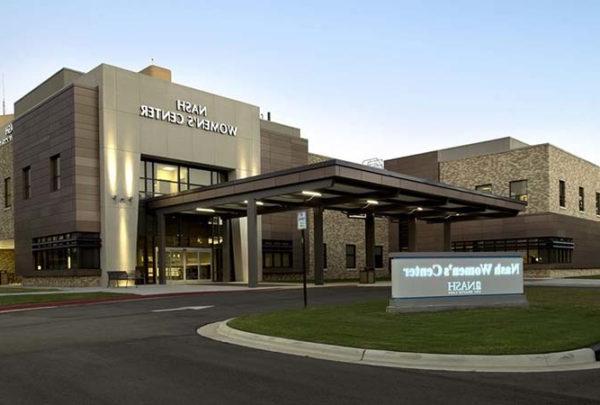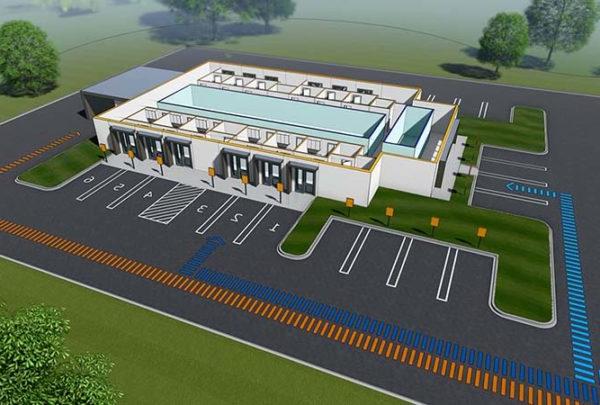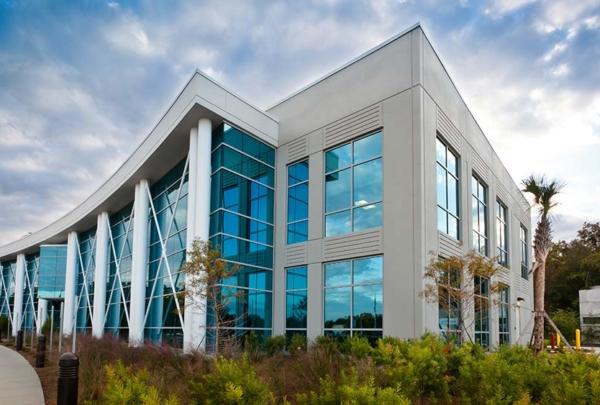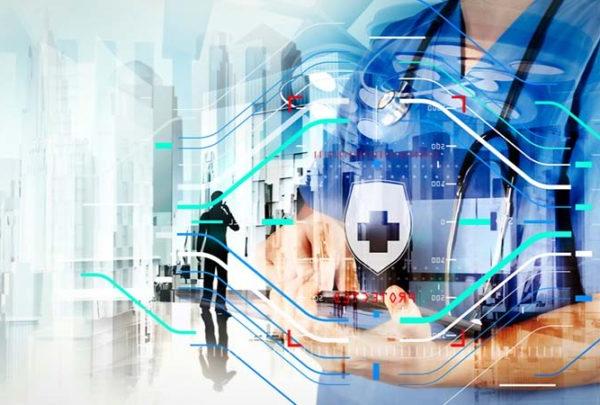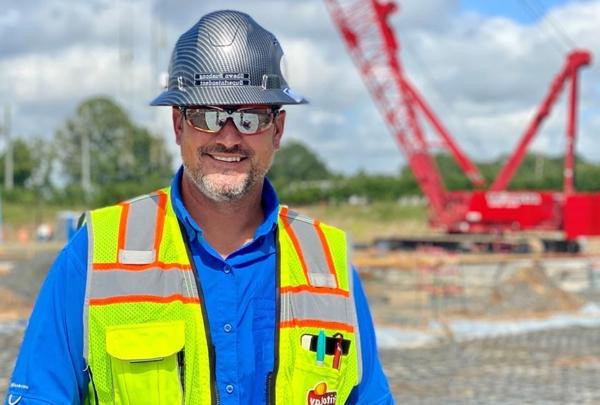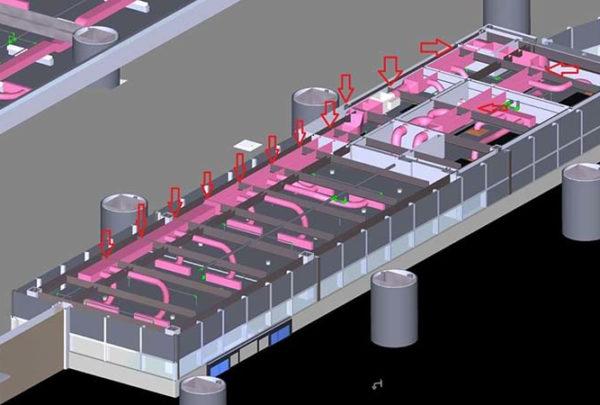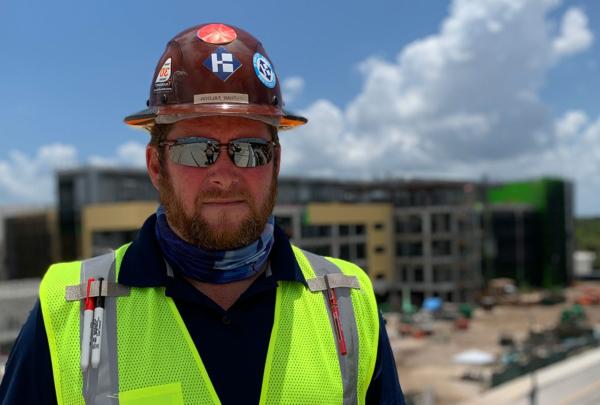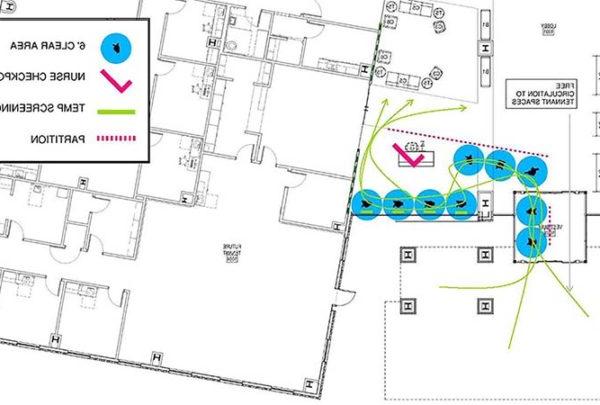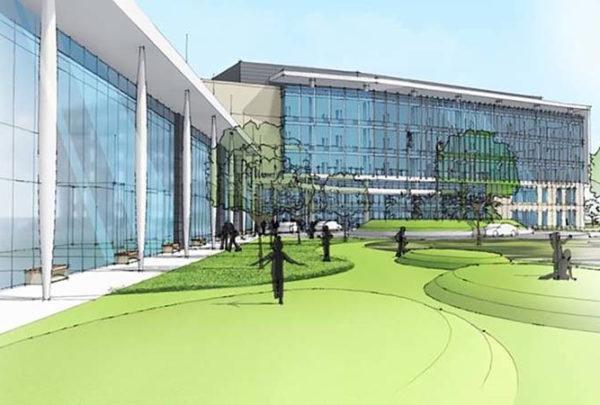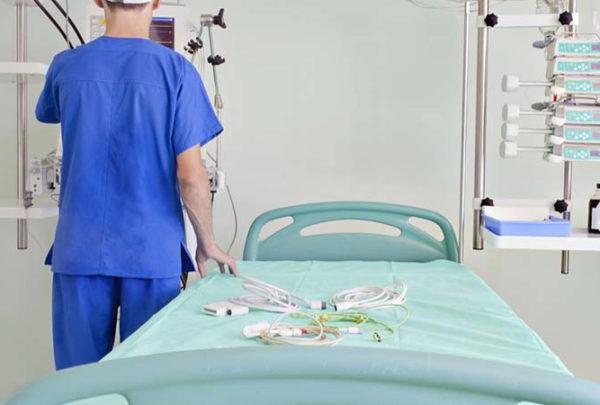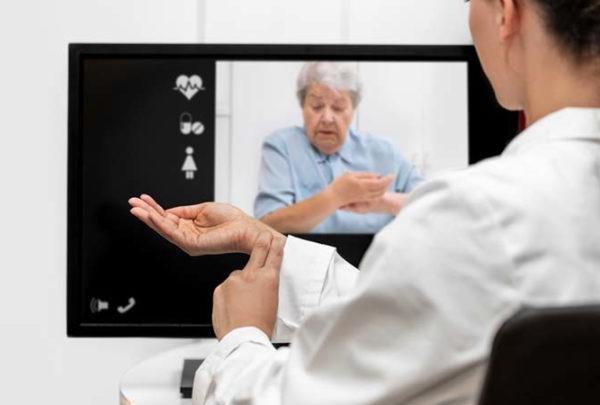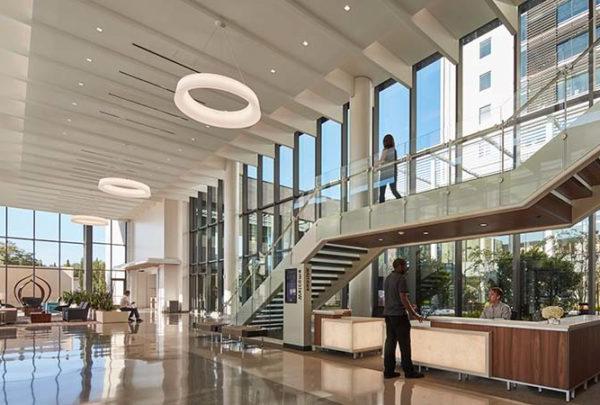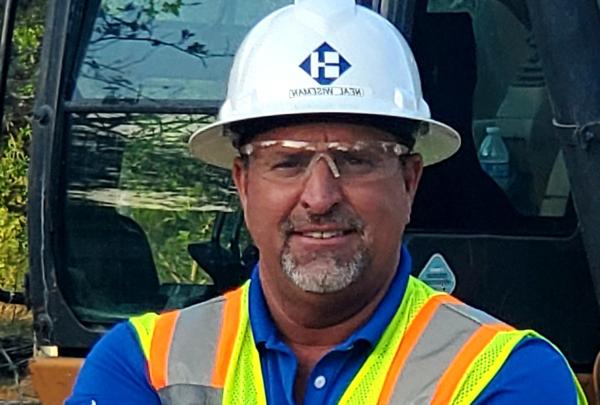“Security presence” in the emergency department can be as simple as an officer sitting in a chair at the greeter desk. Or it can be as involved as a metal detector, a canine team, and ambulance patient wanding. The level of security that is right for your hospital is best determined by local security and police staff. But, the design of the security environment also plays an important role in the number of weapons you apprehend. Design, staffing, and operational processes for the security zone, entry sequence, and patient flow greatly impact the safety of the ED.
Screening Areas
To help security staff observe visitor interaction, the design of the screening area should permit visibility of several zones. Windows in the screening area must permit full view of the entry, vehicular dropoff, RN First/Intake/Care At Arrival, and Family Waiting. Enhanced visibility gives guards more time to react when a visitor displays aggressive or impaired behavior. Equally, it helps visitors become aware and feel secured by the officers’ presence.
With 24/7/365 security, visitors expect guard presence and know they will address actions contrary to a safe environment. Once an officer engages with someone in possession of contraband, a process for addressing subsequent individuals keeps others from capitalizing on the distraction.
If a hospital has (or is considering) screening, it should develop and enforce policies and processes for confiscating contraband. By doing so, the hospital takes the best step towards providing a safe environment for all.
Given their convenience and access to parking, ED entrances also may be convenient for staff entering the hospital to reach the department where they work. This congests the screening area with unnecessary traffic. A staff bypass route, or, enforcing an employee entrance, enables security to focus on visitors.

Emergency Department Security Design Considerations
SECURITY OFFICE/MINI-STATION
As with the Screening Area, the design of the security office should grant visibility to all surrounding areas. This way, officers have more time to anticipate potential threats.
Secured storage for confiscated items keeps weapons from causing harm inside the hospital. And it provides a lawful chain-of-custody for local police. When a visitor triggers the scanner in a concealed-carry municipality, the officer may perform a full-body pat-down in a room within the security office.
The security office is ideal for holding persons for questioning or waiting for local law enforcement. Our designs incorporate a separate interview room or designated chair. This ensures detained individuals do not interfere with ongoing operations. (This may be the same space as the pat-down room.)
We also designate space within the security office for guards to monitor CCTV surveillance of the ED, ambulance entrance and walk-in entry. This permits one guard to track many areas at one time, aiding staffing and response time.
AMBULANCE ENTRANCE
An officer stationed at the ambulance entrance can catch a significant number of contraband. Depending upon the location and need, they may wand incoming patients during peak hours or 24/7/365.While this guard needs a sitting or standing height kiosk, built-in space is not recommended because it isn’t as flexible. Plus it may support an undesirable patient flow process by facilitating registration at the kiosk rather than at the bedside.
CLINICAL AREAS
Uniformed officers circulating in clinical and public areas help improve patient and family conduct and satisfaction. The presence of an officer in uniform conveys a sense of discipline and safety that assuages the negative behavior of others. In some situations, staff benefit from a security guard in behavioral health areas because patients respond positively to the uniform.
PUBLIC AREAS
We recommend that smaller hospitals consider a location for a security officer at the Greeter desk. This way, officers can greet visitors, provide wayfinding assistance, and observe the waiting room to “set the tone” of the environment. This person may also track rotating imaged of areas in the ED on a computer monitor at this same desk, instead of monitoring via CCTV in a security office. During peak hours, additional guards in public areas can continue to address subsequent situations when another guard is engaged.
K-9 teams are making a comeback as a violence deterrent. Hospitals report that the dogs have a tendency to calm everybody down in the waiting room. They are a pleasant distraction from the tension of worrying about the prognosis of a loved one and de-escalate conflict.







